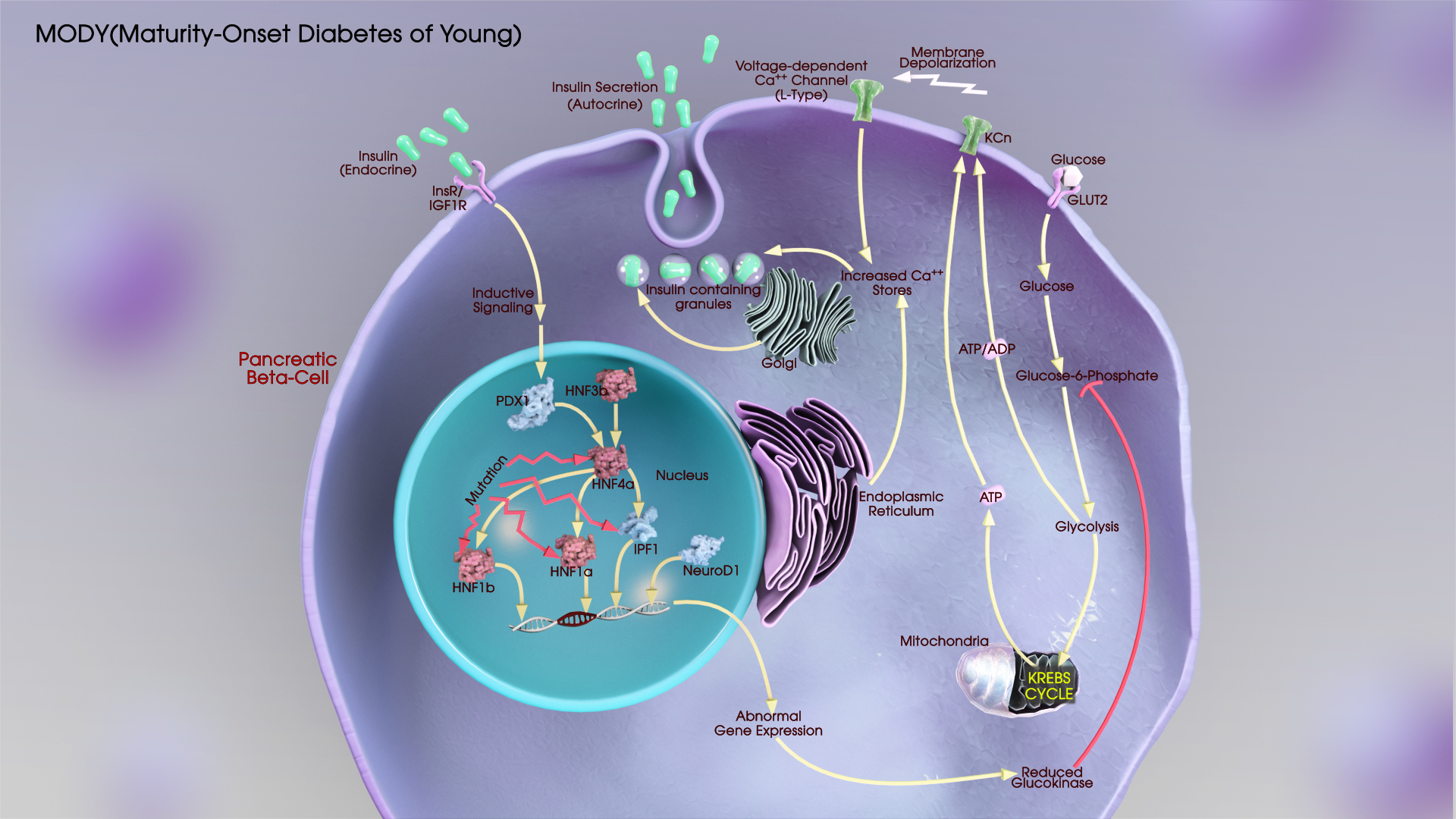Maturity Onset Diabetes of the Young or MODY is a rare form of diabetes mellitus. It occurs as a result of mutation in one of the 11 genes and is very different from Type 1 and Type 2 diabetes. The risk of developing type 1 and type 2 forms of diabetes is related to multiple genes. They are, hence, referred to as ‘polygenic’ forms of diabetes. MODY, on the other hand, is a monogenic form of diabetes.
MODY accounts for about 1- 5% of all cases of diabetes in the United States.
Being a genetically dominant condition, even if one parent bears a mutated gene, there is a 50% chance of transfer of mutation to the offspring.
If inherited, MODY develops and manifests before the age of 25, irrespective of weight, lifestyle, ethnicity and other factors. However, an obese person with a MODY gene mutation is likely to develop symptoms of diabetes sooner than someone of normal weight.
Since MODY is so rare, most people mistake it for type-1 or type-2 diabetes. It must be noted that just like other forms of diabetes, MODY can cause complications throughout the body, including an elevated risk of heart attack and vascular disease, kidney disease, and blindness.
Based on the gene that gets mutated, there are 11 different types of MODY. Consequently, the treatment varies depending up on the type.
Common Types:
MODY 1 affecting HNF4-alpha
People who have inherited a change in HNF4-alpha gene are likely to have had a birth weight of over 9lb (around 4 kg). They may also have had a low blood sugar at the time of birth which might have needed treatment. The patients are treated with a sulphonylurea (a group of tablets often used in Type 2 diabetes) but the condition may progress to needing insulin.
MODY 2 affecting Glucokinase
This is the second-most common form in which mutation in glucokinase gene causes the level of blood glucose to be higher than it should be. However, the blood glucose levels these patients are typically only slightly higher than normal, generally between 5.5-8mmol/l. No special treatment is needed for glucokinase MODY. The condition can be managed by eating right and exercising regularly.
MODY 3 affecting HNF1-alpha
This is the most common form of MODY. The mechanism occurs by lowering the amount of insulin produced by the pancreas. People with MODY 3 and even MODY 4, generally require insulin doses later. Otherwise, they can be treated with sulphonylurea therapy.
MODY 5 affecting HNF1-beta
People with this type of diabetes suffer from a variety of problems including renal cysts, uterine abnormalities and gout, apart from diabetes. Renal cysts can be detected from the time the baby is born. In some cases the kidneys are damaged before the diabetes is diagnosed. This could lead to decreased urine production. Since MODY 5 causes medical problems sometimes even unrelated to blood sugar, it needs to be managed with a variety of treatments. The diabetes tends to develop later and insulin treatment is usually necessary, as well as following a healthy balanced diet and getting regular physical activity.
HNF4-beta MODY also carries a risk of complications of diabetes.
The genes for MODY 7-11 have been recently discovered. People with these types are likely to respond to the treatments used to treat other types of MODY.

Type 1 Diabetes Mellitus
Metabolic diseases are more common in the 21st century due to our lifestyle choices. One of the dangerous and serious disease associated with this is diabetes mellitus. Diabetes mellitus is caused due to a metabolic disorder of the carbohydrate metabolism.Read More..










